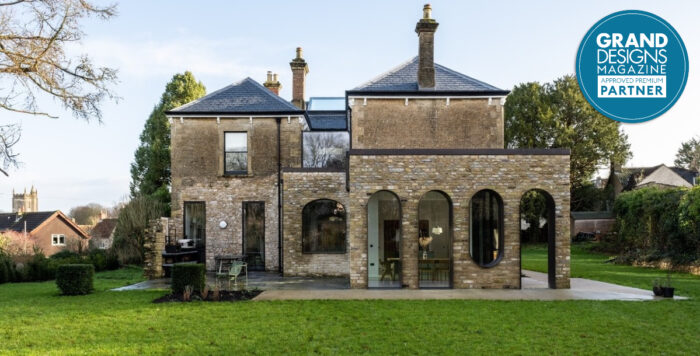Choosing surfaces for your project
The materials for surfaces of a new project can make or break the final design
The materials you choose aren’t just a finishing touch – surfaces can make or break a project, both aesthetically and practically. Here’s how to get it right.
Extensions can sometimes look stark, especially if all your hard surfaces are flat and shiny. This means not only that your upholstery has to work harder to add warmth, but also that you’re missing out on striking and innovative new materials.
Textured finishes, colour and eye-catching shapes can really make an extension feel part of your home.

Photo: Moduelo
Wall coverings
Low-maintenance laminate cladding, slim composites, tough glass and acrylic are ideal for walls in busy areas of an extension, such as kitchens and bathrooms.
Some require templating for a good fit and will push up your budget; for example, laminate panels start at around £70 per sqm and rise to around £250 per sqm for composite cladding.
More affordable ceramic and porcelain tiles offer an opportunity to experiment with designs and glazes, as well as stone and wood looks, plus they are equally robust and versatile. You can find versions online for less than £15 per sqm.
Advances in technology mean vinyl coverings are a good option for a busy home. ‘They’re no longer just a commercial designer’s best friend for durability,’ says interior designer Susan Venn. ‘Many stand up to grubby fingers and pets better than paint, and there are subtle textured finishes replicating linen, wood panelling and contemporary patterns.’
Reclaimed wood, polished plaster and thin layers of microcement can be a striking nod to the industrial-inspired trend for raw materials. ‘We can also apply oxidising finishes to walls, such as iron/rust or copper/Verdigris,’ says Dean Reynolds, director at The Venetian Plasterer.

Photo: Lustrolite
Floor finishes
Extensions often lead outside, so hard flooring is the best option. Natural stone such as limestone or marble can be expensive and will require regular sealing, but will have veining and detailing that give it a unique character.
Porcelain is more practical, lightweight and low-maintenance, so it’s a great way to achieve the look of stone without the drawbacks.
‘For smaller, darker rooms, a pale-coloured porcelain will help to reflect the light, while a large-format tile will create the illusion of space,’ says Stuart Wisbey, director at Stone & Ceramic Warehouse. Prices range from £25 to £100 per sqm. Porcelain is under floor-heating compatible, as are stone, ceramic and terracotta.
Timber flooring has a warmer, more tactile feel, but it’s better to opt for engineered wood over solid because it’s more resistant to changes in heat and humidity. Chevron and parquet designs are on trend, plus there’s a good choice of colours, such as crisp whites and smoky greys. Timber will need oiling or waxing to seal it once it’s installed, or it can be supplied pre-sealed. Prices start at £30 per sqm.
Man-made flooring (such as vinyl tiles and planks and good-quality laminate) suits high-traffic areas, comes in a range of designs and is comfortable underfoot. Vinyl and laminate are both affordable at around £35 to £70 per sqm.

Worktop designs
Options in man-made countertop surfaces have increased in recent years, with some using the latest technology to be ultra-functional. Dekton, for example, won’t fade and can even be used outside, while composites and solid surfaces are stain, heat and water-resistant and many can be moulded into sinks or curves.
Porcelain and ceramic tops are similarly costly but durable, and come in slim depths for a contemporary look. Cast concrete will need sealing to be stain-resistant, while stainless steel is hygienic and hard-wearing but can scratch.
Laminate is the most cost-effective choice; it’s low-maintenance but can be damaged by heat and get scuffed more easily. A good-quality version costs from around £45 per linear metre.
Ever-popular natural materials range from wood – which is relatively affordable at around £30 per linear metre, but can scorch and will need re-oiling or waxing – to stones with varying properties. Granite is the strongest and easiest to care for, but it’s heavy and may have visible joins; it costs £60 to £400 per sqm. Marble is attractive but porous, so will need regular sealing, and can be damaged by acids. It starts at around £100 per sqm.
If you decide to buy worktops online, always request samples. A better option is to visit a kitchen/bathroom company or a specialised supplier or fabricator, which can be on hand in case of problems. Try to view slabs of granite or stone in advance, especially if they have distinctive veining.

Photo: Rossana









